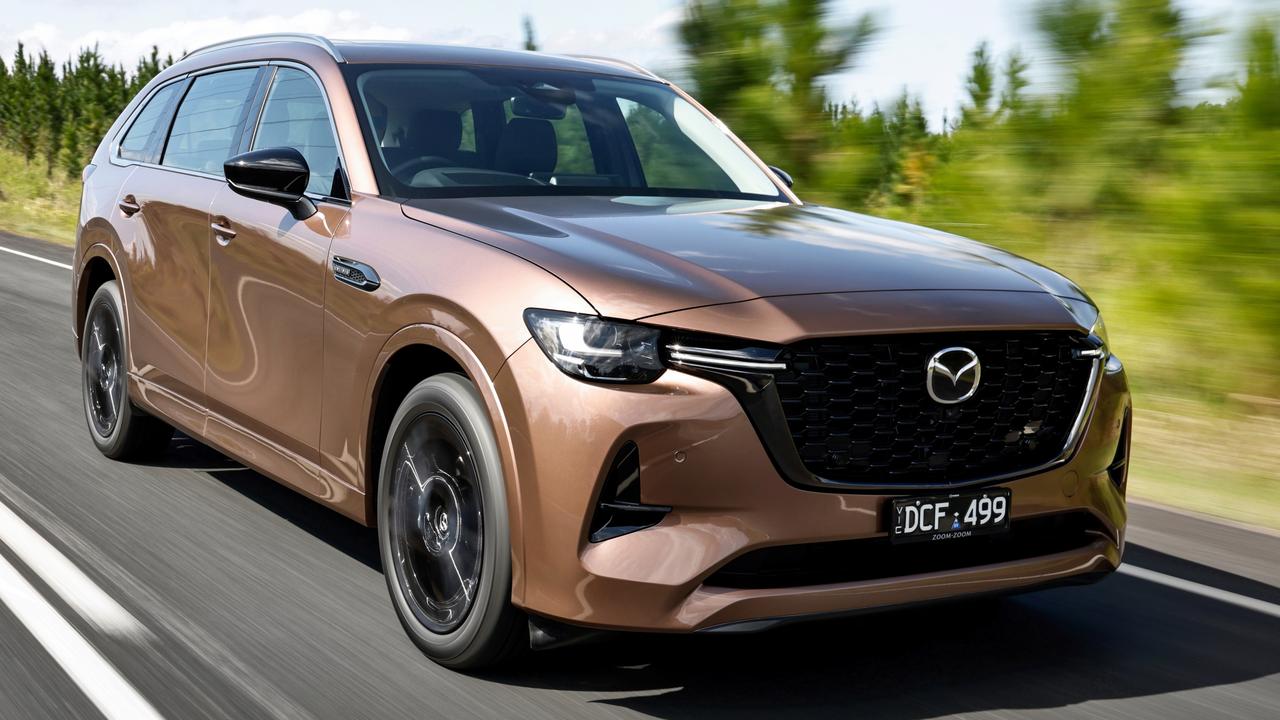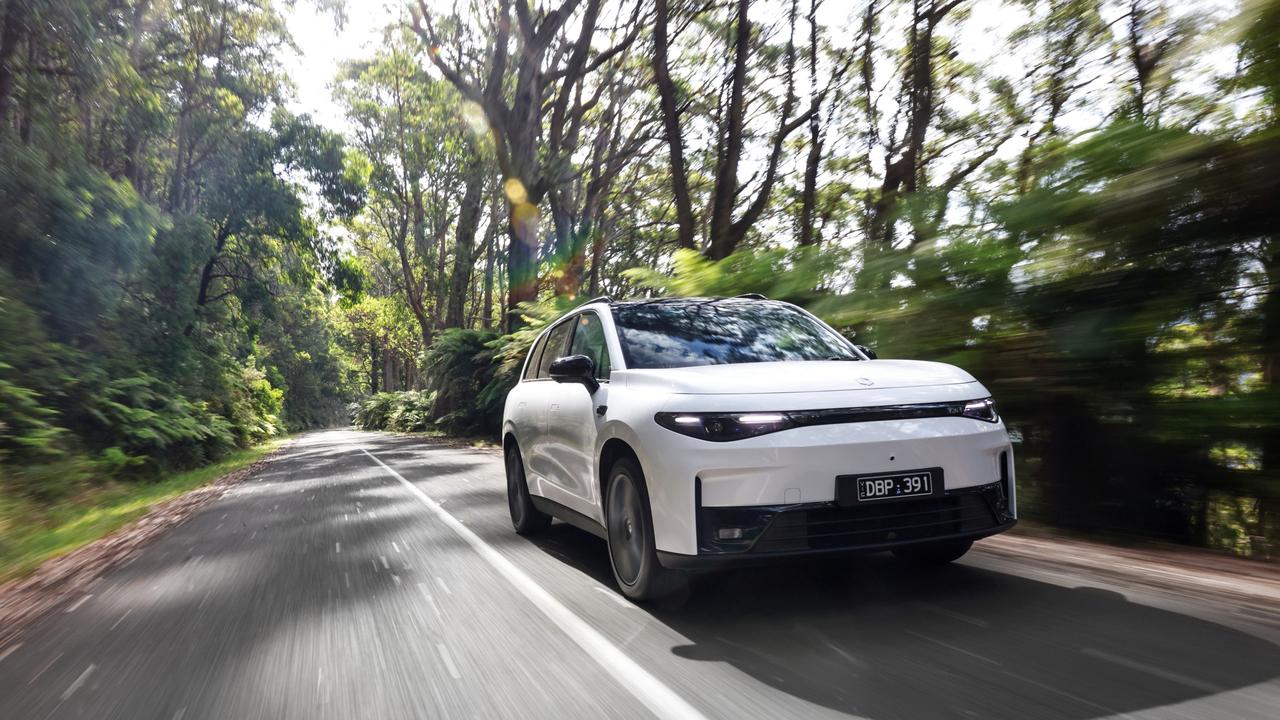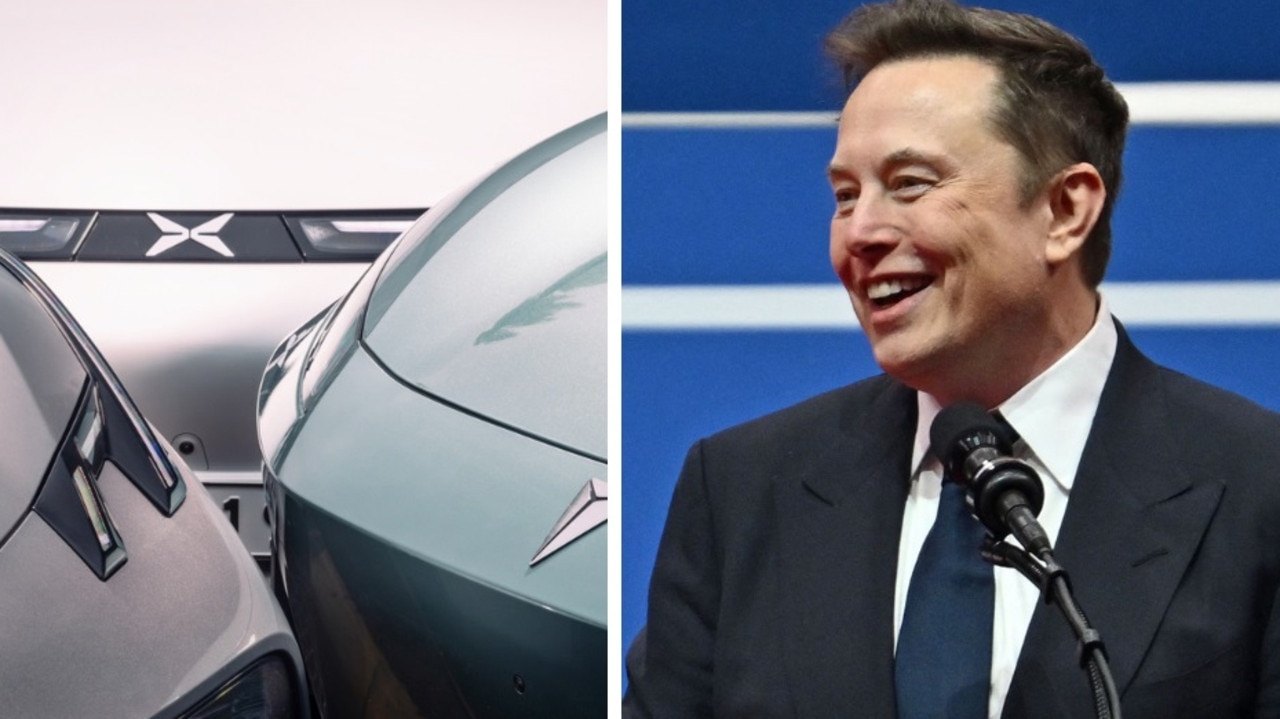2021 Ford Everest BaseCamp review
The Blue Oval has added some new muscle to its off-road range with a new addition to the line-up packed with valuable 4WD equipment.
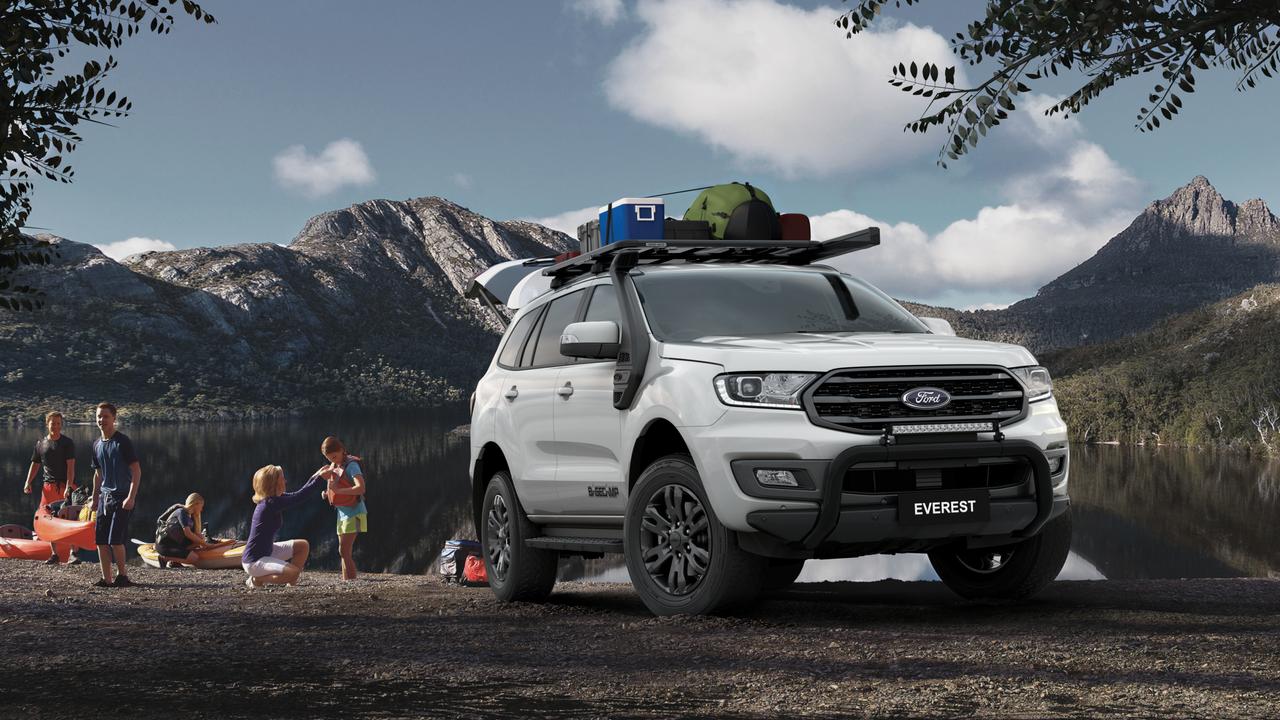
Ford has beefed-up its Everest range with the addition of a new BaseCamp edition that brings a bunch of off-road focused equipment. We find out what it’s all about.
It has a permanent place in the Everest family
Ford’s BaseCamp started as an accessories pack for the Everest back in 2019. Nowadays it’s its own limited-edition model, picking up decals and unique dark grey design highlights on its wheels and grille. The premise is the same: a bunch of features thrown in for not much more money. The numbers add up, though, The BaseCamp is $2200 more than the Everest Trend it’s based on, but adds a snorkel, tow kit, nudge bar, Lumen LED light bar, Sunseeker awning and Rhino Rack Pioneer roof platform, as well as those design tweaks. Ford claims about $6000 of value and while you might be able to crunch deals to bring that down a bit, there’s no way you could package the lot for $2200 – a total of $64,690 drive-away.
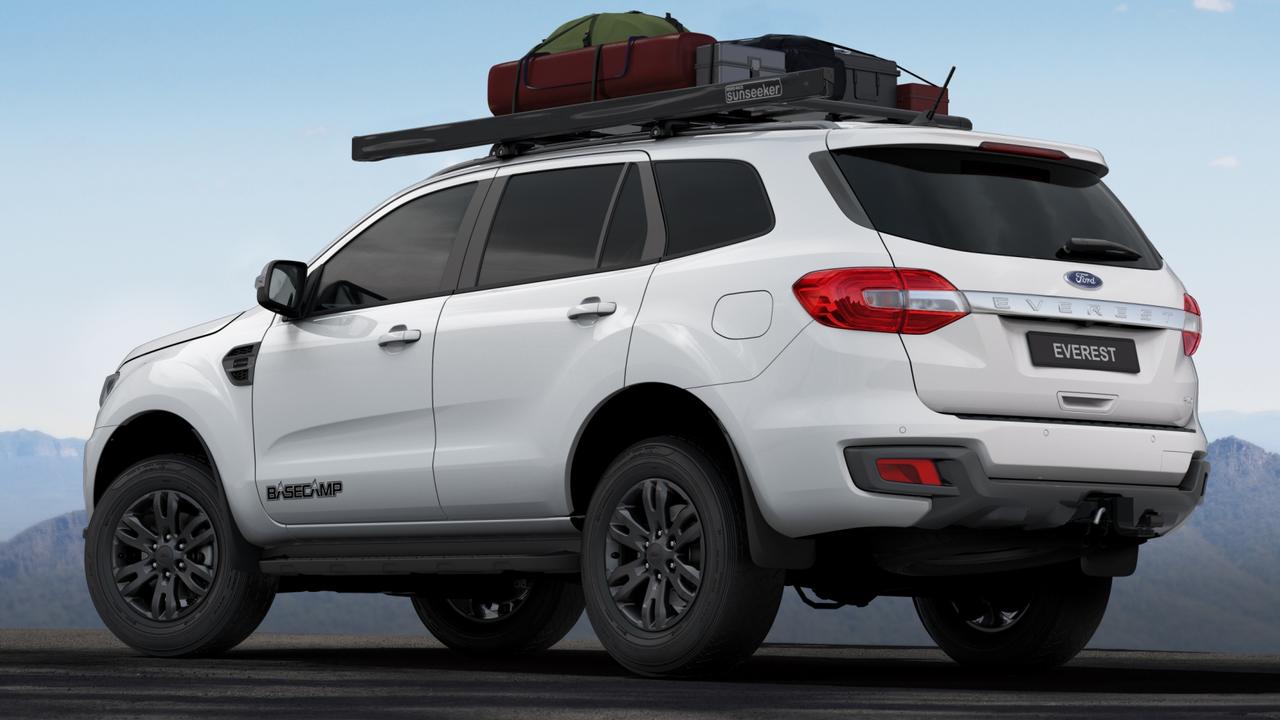
It’s built for adventure
If you’re the type of person who wants an SUV for tooling around the suburbs, then the BaseCamp isn’t for you. Those extras are designed to be used and some build on the impressive off-road capability built into the Everest (which shares underpinnings with the Ranger ute). The BaseCamp is all about getting out and about, camping and adventuring. Besides, there are rear-drive versions of the Everest available for those more likely to stick to the bitumen, whereas the BaseCamp is four-wheel drive only.
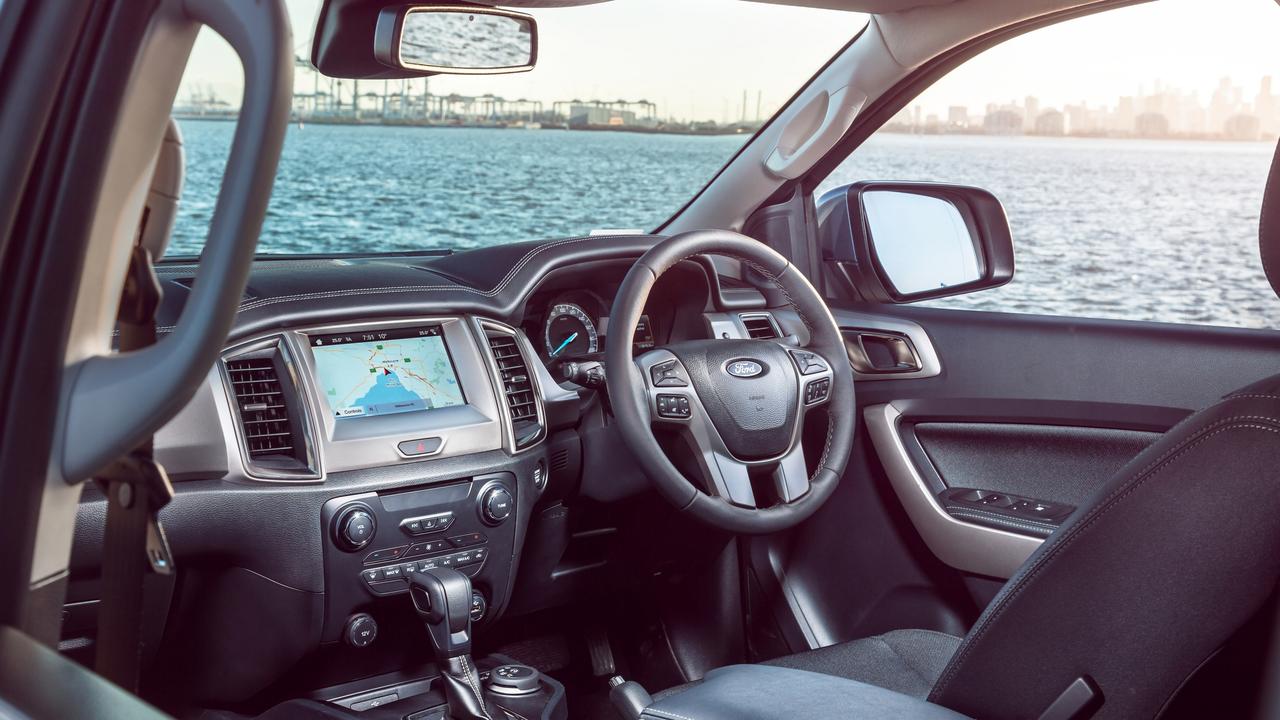
The accessories are covered by warranty
All the accessories that are part of the BaseCamp model get the same five-year unlimited kilometre warranty that comes with the car. That means a longer warranty than you may otherwise have had on some of those items if you bought them independently, as well as the convenience of only having to return to a Ford dealer should something go wrong.
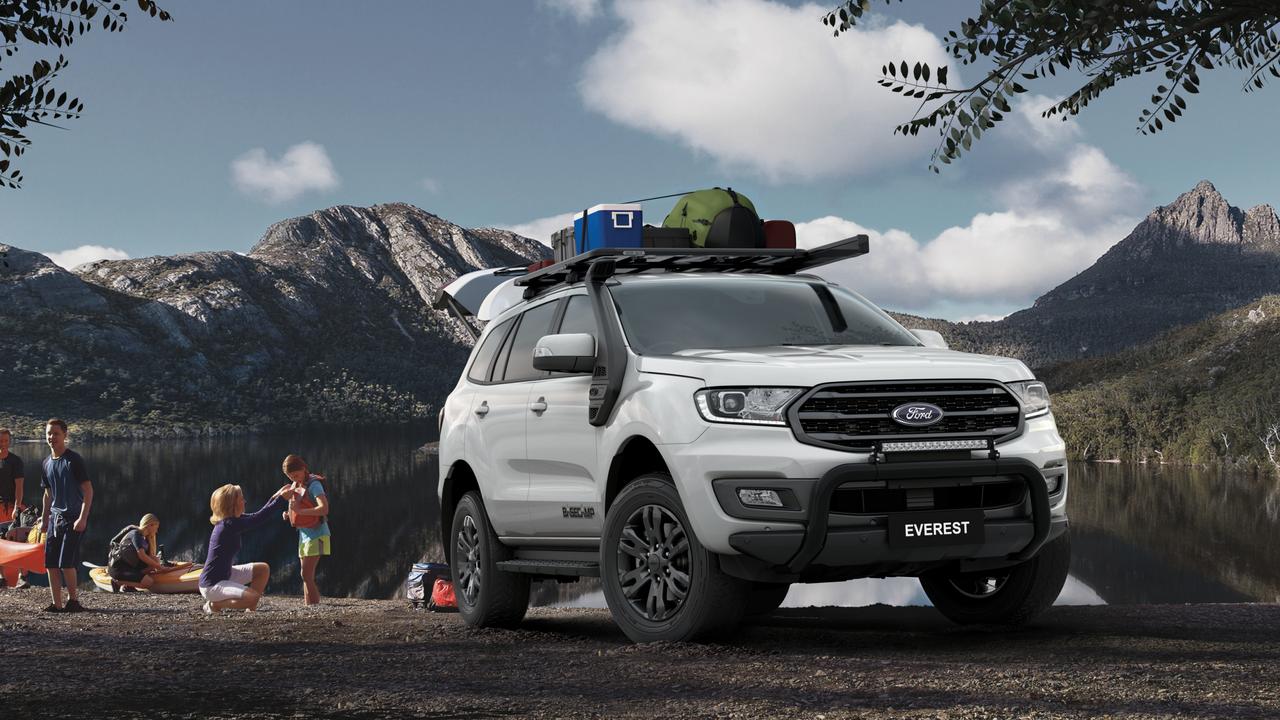
You can add more grunt relatively cheaply
The BaseCamp comes standard with the Everest’s 3.2-litre five-cylinder turbo diesel but for another $1500 you can step up to the more powerful and more efficient 2.0-litre twin-turbo four-cylinder. The smaller engine also steps the towing capacity up from 3000kg to 3100kg, although in both instances you’ll have to leave most of the family at home if you’ve loaded up the trailer. Those accessories add about 60kg, in turn reducing the payload on the 3.2 to about 300kg once you’ve got the trailer weight maxed out. There are no issues with performance for either motor. The 3.2-litre we tested makes 143kW and a thoroughly useful 470Nm, the latter coming on very quickly after pressing the accelerator. It makes city driving easy and country road cruising relaxed.
It drives well for a genuine off-roader
The Everest may not have quite as much space as the rival Toyota Prado but it has a better blend of on- and off-road prowess. Much of the development work for the Everest was performed in Australia and it shows in the way it deals with bumps and corners. While it’s not as sharp in the city as a car-based SUV, it’s towards the upper end among its proper off-road peers for composure and control. It’s also extremely capable on tough tracks and trails while dealing well with corrugations and gravel roads. It’s a solid all-rounder with an eye on the bush.

